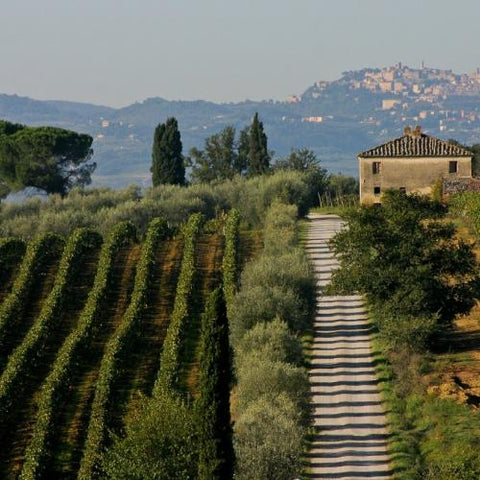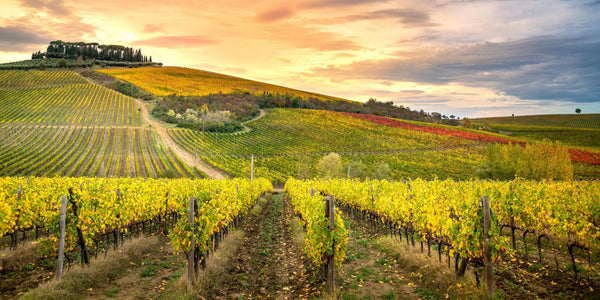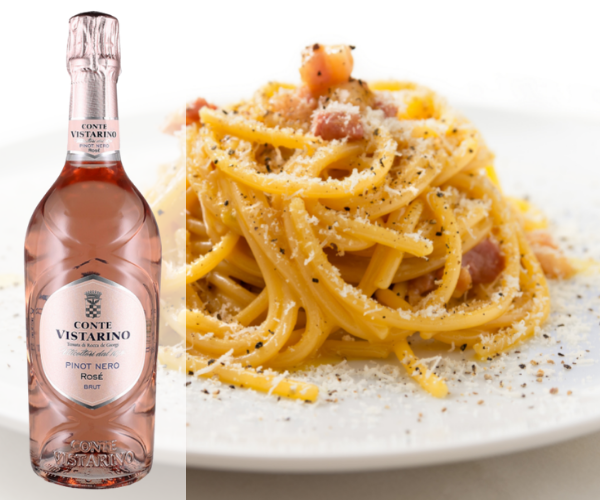Sangiovese is the most widespread Italian grape variety in Italy (the cultivated areas cover 11% of the national wine-growing area).
It's a black grape variety and is grown from Romagna to Campania, despite being the most popular grape variety in my Tuscany. Today there are 243 DOC and DOCG wines where Sangiovese is used.
But first, let's do a brief excursus of the traditional Italian grape varieties.
THE ITALIAN TRADITIONAL GRAPES
Hundreds of varieties of vitis vinifera occupy the world vineyard, but a few dozen represent almost all of them.
Some grape varieties are ubiquitous and grow well at any latitude and altitude, others are grown in relatively large areas but only regionally.
Not all the vines grown in Italy have their roots in our most ancient history. That because it's not easy to go back and affirm that a vine is native to a specific area.
Among these, certainly there are Nebbiolo and Barbera in Piedmont and Lombardy, Sangiovese in Tuscany and Romagna, Verdicchio in Marche, Montepulciano in Abruzzo (not to be confused with the Nobile di Montepulciano wine, coming from Tuscany and therefore composed largely of Sangiovese) , Fiano in Campania, Primitivo in Puglia and Nero d'Avola in Sicily.
These are just some of the vines cultivated for centuries in the Italian regions.
I'll start with grapes that bring me home with every sniff, a bit like Anton Ego eating Ratatouille.

SANGIOVESE GRAPE IN ITALY (AND IN THE WORLD)
Thanks to its exceptional qualities of adaptability, Sangiovese, after having conquered a large part of central Italy, is slowly gaining a slice of the Californian lands thanks to the international success of the “supertuscan” wines.
The preferred environmental conditions for Sangiovese grape are warm days and cool nights.
What many do not know, but what I will tell you today, is that Sangiovese does not actually exist. In fact we should talk about two types of Sangiovese: Sangiovese Grosso (big one) and Sangiovese Piccolo (small one).
Let's try this Sangiovese from Tenuta di Canneto, a pure Tuscan Gem with the sea breeze!
Within these two types there are other sub "biotypes" such as the brunello, from which the famous Brunello di Montalcino is born, the prugnolo gentile, from which the Vino Nobile di Montepulciano is obtained, and like the morellino, from which the famous Morellino di Scansano was born.

Interestingly, Brunello is the name given locally to Montalcino to what was believed to be a grape variety. In 1879 the Commissione Ampeleografica (Ampelographic Commission) of Siena established, after a few years of controlled experimentation, that Sangiovese and Brunello were the same grape variety.
Brunello di Montalcino Ciacci Piccolomini 2011, what's more than this?
THE PECULIAR CHARACTERISTICS OF THE SANGIOVESE GRAPE
From the Sangiovese grape it is possible to extract the "new wines" (vini novelli beverini), but also more structured or the barrique ones.
Sangiovese grapes smells of spices and tobacco, but it is difficult to give an absolute description of the wine made from it, which certainly has some common constants (good tannins and high acidity) but can vary from the cheapest red wine to best qualitative qualities of Brunello.

THE HISTORY OF THE SANGOVESE GRAPE
The history of Sangiovese is opaque and twisted, but the most accredited hypothesis, and certainly suggestive, was that it was a native vine already cultivated by the Etruscans, hence the word clante (strawberry in Etruscan language), which according to some would have given the name to Chianti as the smell of the woods of 4000 years ago, where Sangiovese reigned as a free shrub among the trees, was reminiscent of the strawberry tree.
The first genetic analyzes carried out in the early 2000s, however, showed that Sangiovese is not related to any of the Tuscan wild vines and not even to ancient varieties still cultivated.
It shows a first degree relationship with a minor vine of uncertain origins, Ciliegiolo , grown in Tuscany but also in some southern regions with other denominations (also present in Chianti in quantities usually not exceeding 10%).
Their analysis identifies a genetic proximity to some ancient Calabrian and Sicilian vines such as Nerello Mascalese and Greco nero di Cosenza.
The king of all Sangiovese's - Chianti Classico Castello di Uzzano
THE SANGIOVESE GRAPE TASTING
THE SANGIOVESE IN THE VISUAL EXAMINATION
The wine obtained from Sangiovese grapes vinified in purity is of an intense ruby red color.
Depending on the aging, it can have a good transparency with violet to garnet reflections.
The structure is generally good and it is possible to arrive at wines with great body.
THE SANGOVESE IN THE OLFACTORY EXAMINATION
Sangiovese smells of fruity notes, of red and black berried fruits as well as strong floral notes of violet flowers.
Among the fruits are mainly recognized: black cherry, raspberry, plum, blueberry and blackberry.
Aging in wood gives Sangiovese spicy aromas of vanilla, licorice, cinnamon, nutmeg and black pepper, as well as balsamic notes of menthol and eucalyptus.
If aged for a long time, the wines acquire tertiary hints of tobacco, leather, cocoa and chocolate.
THE SANGIOVESE IN THE EXAMINATION OF TASTE
On the palate, the Sangiovese grape has a marked acidity and an appreciable content of tannins.
From these characteristics derives its predisposition to aging in wood, which allows it to soften the more "rustic" notes and at the same time improve its structure.
The wines have a moderate alcohol content which gives warmth and softness.

SANGIOVESE GRAPE AND FOOD PAIRINGS
The savory, tasty and intense notes of Sangiovese make it an ideal wine for pairing with food.
Sangiovese grapes is an excellent accompaniment to a Sunday roast, but it is also perfect with grilled vegetables or bean soup (also given the geographical origin).







